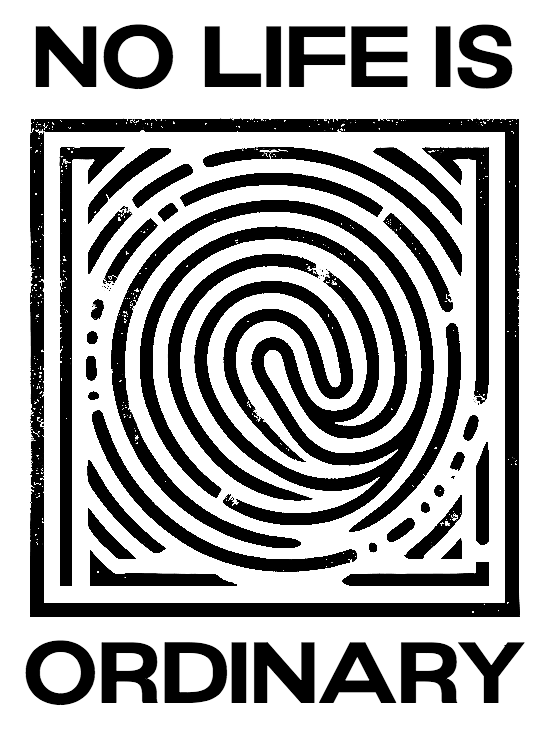Introduction
In an era where the pace of life seems to only quicken, finding moments of peace and presence becomes both a challenge and a necessity. Our days are often filled with a relentless stream of tasks, notifications, and responsibilities, leaving us craving a pause, a breath, a way to ground ourselves in the now. Amidst this whirlwind, the quest for mindfulness emerges not as a luxury, but as an essential pursuit for emotional and psychological well-being.
Mindfulness, the practice of being fully present and engaged with our current experience, free from distraction or judgment, offers a sanctuary from the chaos. It’s a skill that allows us to navigate our lives with grace and calm, appreciating the richness of each moment. However, achieving this state of mindful awareness can seem daunting amidst the cacophony of daily life.
Enter the humble colouring book. Once relegated to the realm of children’s activities, colouring has been rediscovered by adults as a powerful, yet wonderfully simple tool for mindfulness. This renaissance of colouring for adults brings with it an array of intricate, mesmerizing designs specifically crafted to engage the mind and foster a meditative state. colouring, with its accessible appeal and ease of entry, promises a gateway to mindfulness that is as profound as it is pleasurable.
As we explore the symbiotic relationship between colouring and mindfulness, we uncover not just an activity, but a practice—a form of meditation that is tactile, creative, and immensely satisfying. This introduction beckons you to consider colouring not merely as a pastime, but as a path to experiencing the present more fully, a bridge to mindfulness accessible to all, regardless of artistic talent or experience.
Understanding Mindfulness
Mindfulness, at its core, is the practice of paying full attention to the present moment, with a stance of openness and non-judgment. It’s about noticing what’s happening around us, within us, and accepting our thoughts and feelings without criticism or overreaction. In the whirlwind of contemporary life, where multitasking and digital distractions are the norm, mindfulness stands as a beacon of calm, inviting us to slow down and truly engage with the world in a more meaningful way.
The significance of mindfulness in today’s society cannot be overstated. Amidst a backdrop of constant connectivity and the pressure to always be “on,” mindfulness offers a much-needed respite. It allows individuals to break free from the cycle of stress and reactivity, fostering a state of mental clarity and emotional stability. This shift not only enhances personal well-being but also improves the quality of interactions with others, making mindfulness a crucial skill for navigating the complexities of modern life.
Scientific research supports the myriad benefits of mindfulness, linking it to a host of positive outcomes. Studies have shown that regular mindfulness practice can reduce stress, anxiety, and depression. It has the power to lower blood pressure, improve sleep, and bolster the immune system. Furthermore, mindfulness has been associated with increased focus, memory, and cognitive flexibility, offering tangible benefits for both personal and professional spheres.
The science behind these effects points to mindfulness’s ability to alter brain structures and functions. For instance, mindfulness practice has been linked to changes in the amygdala, the brain’s “fight or flight” center, which is crucial in managing stress. It has also been shown to enhance the density of gray matter in areas of the brain involved in learning, memory, and emotion regulation. These neurological changes underscore the profound impact that mindfulness can have on our overall health and happiness.
In essence, mindfulness offers a scientifically backed, universally accessible means to enhance our quality of life. It equips us with the tools to remain grounded and centered, even amidst life’s inevitable upheavals, making it an invaluable practice for anyone seeking to navigate the demands of contemporary living with grace and resilience.
The Link Between colouring and Mindfulness
The seemingly simple act of colouring mirrors the principles of mindfulness in a way that is both subtle and profound. Just as mindfulness encourages us to fully engage with the present moment, colouring channels our focus towards the singular task of bringing a design to life. This alignment of focus and action embodies the essence of mindfulness, creating a bridge between the art of colouring and the practice of present-moment awareness.
colouring requires a level of attention that draws us away from ruminating on the past or worrying about the future. Instead, it anchors us in the now, as we concentrate on the choice of colour and the boundaries of the design before us. This focused attention is a hallmark of mindfulness, which teaches us to observe our present experience without judgment. In colouring, each stroke of the pencil or brush becomes an act of mindfulness, a moment of pure presence where the mind is neither clinging to nor resisting what is.
The psychological effects of engaging in such focused, repetitive tasks are significant and beneficial. Research suggests that activities requiring this type of attention can induce a meditative state, leading to reductions in stress and anxiety. The repetitive motion of colouring can help quiet the mind, slowing down the whirlwind of thoughts that often plague our waking hours. This calming effect is akin to the repetitive chants or movements used in traditional meditative practices, which are known to help practitioners reach a state of deep inner peace.
Moreover, the simplicity of the task at hand — colouring within or even outside the lines — allows individuals to engage in the activity without the pressure of performance or the fear of failure. This non-judgmental approach is central to mindfulness, encouraging a compassionate attitude towards oneself. colouring becomes not just an activity but a safe space where the mind can wander freely, guided by the gentle discipline of the task, yet unencumbered by expectations or critical self-assessment.
The psychological benefits extend beyond the act of colouring itself. The completion of a colouring page provides a sense of accomplishment and satisfaction, boosting one’s mood and self-esteem. This positive feedback loop reinforces the practice, making colouring an enjoyable and effective way to cultivate mindfulness.
In essence, the link between colouring and mindfulness is both practical and profound. Through the simple act of colouring, individuals can access a state of flow and present-moment awareness, harnessing the therapeutic power of mindfulness to enhance emotional and psychological well-being. This connection illuminates colouring as not just a hobby, but as a vibrant, accessible path to mindfulness for people of all ages and backgrounds.
colouring Books as Tools for Meditation
colouring books, with their intricate patterns and endless possibilities for colour exploration, serve not only as a creative outlet but also as powerful tools for meditation. By facilitating a meditative state, colouring offers a unique pathway to tranquility, stress reduction, and enhanced mental clarity. This transformative process illustrates how an activity as simple as colouring can parallel, and in some ways complement, traditional meditation practices.
Facilitating a Meditative State Through colouring
Engaging with a colouring book encourages the mind to settle into a rhythm. The act of selecting colours, filling in spaces, and observing the gradual emergence of a design focuses the mind and eases it into a state of flow. This state, characterized by complete immersion in the activity at hand, mirrors the meditative practice of single-pointed concentration. The repetitive motion and required attention to detail can help silence the internal chatter, pulling the mind away from distracting thoughts and worries.
In this serene state, the body responds by lowering stress levels, as evidenced by decreased heart rate and a reduction in the production of stress hormones. This physiological shift not only enhances mental focus but also promotes a sense of calm and well-being, akin to the effects achieved through traditional meditation.
Comparative Analysis with Traditional Meditation Techniques
While colouring and traditional meditation share common benefits, including stress reduction and improved focus, they appeal to practitioners in different ways. Traditional meditation often involves sitting in silence, focusing on the breath or a mantra, and observing thoughts and sensations without attachment. This practice requires a level of discipline and patience that can be challenging for beginners or those with busy minds.
colouring, on the other hand, offers a more tactile and visually engaging form of meditation. It provides a concrete focus (the colouring page), which can be particularly appealing for individuals who struggle with the abstract focus required in traditional meditation practices. Moreover, colouring allows for a gentle introduction to the principles of mindfulness and meditation, making these practices more accessible to a broader audience.
However, it’s important to note that colouring and traditional meditation are not mutually exclusive but rather complementary. colouring can serve as a gateway to deeper meditation practices, helping individuals develop the focus and mindfulness that facilitate traditional meditation. Conversely, those experienced in meditation may find colouring a refreshing extension of their practice, adding a creative and joyful dimension to their mindfulness practice.
Conclusion
colouring books stand out as a form of meditation that is both accessible and deeply therapeutic. By bridging the gap between traditional meditation and creative expression, colouring offers a unique approach to mindfulness that is grounded in the joy of creation. Whether used in conjunction with traditional meditation techniques or as a standalone practice, colouring books provide a valuable tool for anyone seeking to cultivate a meditative state, reduce stress, and enhance their overall mental and emotional well-being.
Psychological and Emotional Benefits of colouring
The simple act of colouring, often reminiscent of childhood innocence and creativity, holds profound psychological and emotional benefits for adults. This creative pursuit goes beyond mere nostalgia, emerging as a potent tool for mental health management, stress relief, and emotional enrichment. Delving into these benefits reveals the multifaceted impact colouring can have on our well-being.
Stress Relief and Mood Improvement
One of the most immediate benefits of colouring is its ability to alleviate stress. The focused attention required to navigate the intricate designs of a colouring book helps divert the mind from stressors, leading to a decrease in anxiety levels. This shift is not just subjective; it’s supported by research indicating that activities like colouring can reduce the production of cortisol, the body’s primary stress hormone.
Moreover, colouring can significantly enhance mood. The act of completing a task, such as filling a page with colours, triggers the release of dopamine, a neurotransmitter associated with pleasure and reward. This biological response not only lifts one’s spirits but also instills a sense of accomplishment and satisfaction, counteracting feelings of sadness or negativity.
Expression of Creativity and Emotional Processing
colouring offers a unique avenue for creativity and self-expression. Choosing colours, experimenting with techniques, and personalizing designs allow individuals to express their aesthetic preferences and personal identities. This creative process can be particularly liberating for those who may not consider themselves artistically skilled, providing a non-judgmental space to explore and create.
Furthermore, colouring can serve as a form of emotional processing. The colours chosen and the intensity of the strokes can reflect an individual’s emotional state, serving as a mirror to internal feelings. This act of externalizing emotions through colour and design can provide insights into one’s psychological state, facilitating a deeper understanding and processing of emotions. For some, colouring becomes a visual diary, capturing moods and feelings in a way words cannot.
Enhancing Mental Resilience
Regular engagement with colouring can contribute to mental resilience. By providing a healthy escape mechanism, colouring allows individuals to take a break from life’s pressures, recharge their mental batteries, and approach challenges with renewed perspective and energy. This form of creative mindfulness can help build coping skills, making it easier to navigate stressors and bounce back from adversity.
Conclusion
The psychological and emotional benefits of colouring are both broad and profound, offering relief from stress, an improvement in mood, a means for creativity and self-expression, and a tool for emotional processing and resilience. As a low-cost, accessible activity, colouring presents a valuable complement to traditional mental health therapies and a standalone practice for enhancing personal well-being. In the realm of self-care, colouring books stand out as a vibrant tool for nurturing the mind and spirit, inviting individuals to discover the therapeutic power of colour in their lives.
Mindfulness Through colour and Creativity
colouring, at its essence, is an invitation to the therapeutic interplay of colour and creativity, offering a unique pathway to mindfulness. This process goes beyond merely filling in spaces; it is an act of engagement and exploration, where the choice of colours and the act of creating become powerful conduits for mindfulness. This section delves into how the deliberate selection of colours and the creative engagement with colouring books can enhance mindfulness and contribute to a richer, more fulfilling colouring experience.
The Therapeutic Process of Choosing colours
The act of selecting colours for a colouring project is not just about aesthetics; it’s an exercise in mindfulness and emotional exploration. colour choices can be reflective of one’s current mood, or they can be aspirational, representing desired emotional states. This process encourages individuals to tune into their feelings and preferences, fostering a deeper connection with themselves.
Moreover, the colours we gravitate towards can have a profound impact on our emotional and psychological well-being. colours are known to evoke specific emotions and moods; for example, blues can have a calming effect, while yellows might uplift and energize. Engaging with this colour-emotion interplay allows individuals to use colouring as a form of emotional regulation, selecting hues that resonate with their current state or that facilitate a desired emotional shift.
Engaging Creatively with colouring Books
Creativity in colouring is not bound by artistic skill but is an expression of individuality and imagination. The way one chooses to colour—a focus on intricate details or perhaps a preference for bold, sweeping areas of colour—reflects personal creative expression. This freedom to experiment and personalize is what makes colouring a deeply mindful activity. It encourages present-moment awareness as individuals become absorbed in the creative process, letting go of external worries and focusing solely on the act of colouring.
The engagement is further deepened by the tactile experience of colouring—the feel of the paper, the sound of the pencil or brush on the surface, and the visual pleasure of seeing a page come to life. This multi-sensory engagement keeps individuals anchored in the present, enhancing mindfulness through the act of creation.
The Role of Present-Moment Awareness
Present-moment awareness is crucial in maximizing the mindfulness potential of colouring. By fully immersing oneself in the act—paying attention to the stroke of the pencil, the blend of colours, and the evolving design—colouring becomes more than an activity; it transforms into a mindful practice. This level of engagement helps silence the mind’s chatter, replacing it with a peaceful focus and a sense of being fully alive in the moment.
The mindfulness achieved through colouring can have ripple effects, enhancing one’s ability to apply present-moment awareness to other aspects of life. It nurtures a mindfulness muscle that, with regular practice, can improve overall mental clarity, emotional balance, and well-being.
Conclusion
The journey of mindfulness through colour and creativity is both therapeutic and enriching. By choosing colours with intention and engaging creatively with colouring books, individuals can deepen their mindfulness practice, experiencing the present moment with enhanced clarity and joy. colouring, in this light, is not just an activity but a vibrant meditation, a canvas for mindfulness that is accessible to everyone, everywhere.
Incorporating colouring Into Your Mindfulness Practice
Integrating colouring into your daily mindfulness practice is a beautiful way to enhance your journey towards greater awareness and tranquility. Whether you’re new to mindfulness or looking to deepen your existing practice, colouring offers a unique blend of creativity and calm. Here are practical tips for seamlessly incorporating colouring into your mindfulness routines, creating an environment conducive to mindful colouring, and selecting materials that enrich your experience.
Seamlessly Integrating colouring into Daily Routines
- Make It a Habit: Choose a specific time of day for your colouring practice, perhaps as a morning ritual to start your day with intention or an evening activity to unwind. Consistency helps in forming a habit, making it easier to incorporate colouring into your daily life.
- Short Sessions Count: Even if you only have 10 minutes to spare, use that time to colour. Mindfulness doesn’t require long stretches of time; it’s about the quality of presence in the moment.
- Combine with Other Mindfulness Practices: If you already have a mindfulness routine, such as meditation or yoga, incorporate colouring as a part of it. For example, colour for a few minutes after meditating to transition gently back to your day with creativity and focus.
Creating a Conducive Environment for Mindful colouring
- Dedicate a Space: Set aside a specific spot for colouring. It doesn’t have to be large—a corner of a room or a small table will do. The key is to have a place that you associate with mindfulness and creativity.
- Minimize Distractions: Ensure your colouring space is away from high-traffic areas and digital distractions. Consider putting your phone on silent or in another room to fully engage with the colouring experience.
- Comfort and Lighting: Make sure your colouring area is comfortable, with supportive seating and good lighting. Natural light is ideal, but if that’s not possible, choose a warm, soft artificial light to create a cozy atmosphere.
Choosing the Right colouring Materials
- Select According to Preference: There’s no one-size-fits-all when it comes to colouring materials. Experiment with coloured pencils, markers, gel pens, or watercolours to find what you enjoy most. The joy in the process is as important as the outcome.
- Quality Over Quantity: Start with a few high-quality tools rather than a large assortment of lower-quality options. Good-quality materials can enhance your colouring experience, making it more enjoyable and engaging.
- Keep Materials Organized: Organize your colouring materials in a way that makes them easy to access and appealing to use. A tidy, visually pleasing setup invites you to engage with your practice regularly.
Incorporating colouring into your mindfulness practice is a journey of exploration and personal expression. By creating a habit, setting up a conducive environment, and selecting materials that resonate with you, colouring can become a cherished part of your daily routine. It’s a practice that not only nurtures creativity but also cultivates a deeper sense of presence, awareness, and well-being. Embrace colouring as a vibrant thread in the tapestry of your mindfulness practice, and discover the profound peace and joy it can bring to your life.
Conclusion
As we’ve journeyed through the vibrant intersection of colouring and mindfulness, it’s clear that this simple activity harbors profound possibilities for enhancing our mental and emotional landscape. colouring transcends being merely a nostalgic return to childhood pastimes; it emerges as a potent mindfulness practice, accessible to all and rich with benefits for the mind and spirit.
Recap of Key Insights
- A Bridge to Mindfulness: colouring serves as an accessible bridge to mindfulness, inviting individuals to engage in the present moment through the act of creating.
- Therapeutic Benefits: The act of colouring has been shown to reduce stress and anxiety, improve mood, and offer a therapeutic outlet for expressing creativity and processing emotions.
- Meditative Qualities: colouring shares many qualities with traditional meditation, including the capacity to induce a meditative state, fostering a sense of calm and focus.
- Accessibility and Inclusivity: One of the most beautiful aspects of colouring is its inclusivity. It requires no prior artistic skill, making it a universally accessible path to mindfulness.
A Call to Exploration
We encourage you, the reader, to explore colouring as a path to mindfulness. Whether you’re looking to enhance your current mindfulness practice or searching for a creative outlet to quiet your mind, colouring offers a unique and fulfilling avenue to explore. It’s a journey that promises not just relaxation and creative satisfaction but a deeper connection with the present moment.
colouring is not about perfection; it’s about expression. It’s not just about filling in spaces but about opening up spaces within ourselves—spaces of peace, creativity, and presence. So, we invite you to pick up a colouring book and let your intuition guide your choice of colours and patterns. Let each stroke be an act of mindfulness, a moment of connection with the here and now.
Conclusion
In a world that often demands our constant attention and energy, colouring stands out as a gentle reminder of the joy and tranquility that can be found in simplicity. As you incorporate colouring into your life, may you discover not just the beauty on the page but also the beauty within. colouring is more than an activity; it’s a meditation, a celebration of the moment, and an invitation to a more mindful and colourful life.





